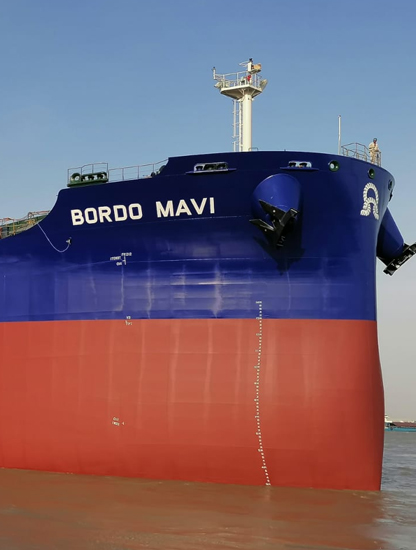
NACKS (Nantong COSCO KHI Ship Engineering), a Chinese joint venture shipyard of Kawasaki Heavy Industries, has received orders for 61,000 dwt type bulkers one after another, taking advantage of Japanese quality and cost competitiveness. Singapore Shipping Company Susesea Holdings has ordered two ships of the same type. In addition, it seems that the Japanese ship owner has decided to upgrade one ship. The price of the three vessels is unknown. However, by the end of this month, NACKS received a lot order for six vessels of the same type ordered from Norden on the NOx (Nitrogen Oxide) Second Regulation (Tier II) Dock. It seems that the contract was concluded below the market price of the 38 type bulk carrier made in Japan. With the number of new construction projects has drastically decreased and the pressure to lower ship prices has increased due to the spread of new coronavirus infection, NACKS, which has both Kawasaki Heavy Industries’ production and management system and cost competitiveness, is becoming more and more “a market leader of Japanese companies in the new shipbuilding market” (related officials of trading companies). Singapore-based dry shipping company Susesea Holdings has announced that it has signed a contract with NACKS to build two 61 type bulkers, making the first use of Japanese ship finance. At the end of June, NACKS received an order for four 61 type bulkers from the Danish major tramper company Norden, and an additional order for two of the same vessels in the middle of this month. According to several people, it seems that the Japanese shipowner recently closed one ship, and in the past three months, it has received orders for nine 61 type bulkers. NACKS has not disclosed a series of contracted ship prices for the 61-type Bulker. However, according to several people, the ship price level seems to be “below the market price at which the Japanese shipyard builds the 38 type bulk carrier, which is smaller than the 61 type, in Japan“ (the same). NACKS can receive orders at highly competitive ship prices based on the production and management method transplanted from the Kawasaki Heavy Industries and Sakaide Works since its establishment in China, which has lower labor costs than Japan and South Korea in 1995. Significant results have been achieved through steady efforts to improve efficiency such as automation of production lines. On the other hand, at the moment, the same type 61 type bulker is continuously ordered by lot orders including six Norden vessels, and “the reduction of construction cost per vessel is also a factor of cost competitiveness“. (related officials of trading companies) In addition, according to a number of people concerned, NACKS’s 6 vessels ordered from Norden “will be built on the NOX Tier II Dock, which is the world’s fewest remaining“ (owner official). Overseas newspapers also report that the two vessels ordered by Susesea Holdings are compatible with Tier II. For this reason, it is possible that the ship price may be lower than that of the same type of Tier III-compatible ship, which has higher construction costs. While the amount of orderbooks is declining, domestic shipyards, which want to promote orders for major Tier 3 small and medium-sized bulk carriers, continue to struggle. A Japanese shipyard official said, “In the case of small and medium-sized bulk carriers, the new ship price of Tier III ships generally rises by about 2 million dollars (about 200 million yen) from Tier II ships. In order for the price of Tier III vessels to recover to a level commensurate with the increase in costs, it is necessary to have the charter fee clearly reflect the difference between Tier II vessels and Tier III vessels.“